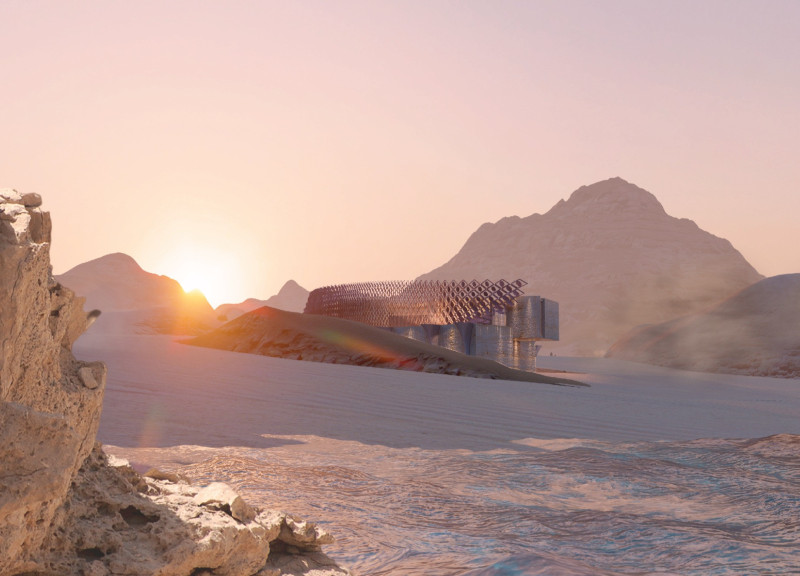5 key facts about this project
The primary function of the project is to serve as a mixed-use development, combining residential units with commercial spaces. This approach not only fosters a sense of community but also promotes sustainable urban living by reducing the necessity for transportation. The design prioritizes accessibility, ensuring that all users can navigate the space comfortably. This is accomplished through an intuitive layout that seamlessly connects different areas, demonstrating an understanding of pedestrian flow and community interaction.
Throughout the project, a clear emphasis is placed on materiality. The materials selected serve both aesthetic and functional purposes, contributing to the overall vision of the design. Prominent among them are reinforced concrete for the structural elements, providing durability and strength; natural wood cladding that adds warmth and texture to the façade; and expansive glass panels that foster transparency and connect the interior spaces with the exterior environment. These materials reflect a commitment to sustainability, as they are chosen for their long-lasting qualities and minimal environmental impact.
One of the unique design approaches is the integration of green spaces within the architectural scheme. Rooftop gardens and vertical green walls not only enhance the aesthetics but also promote biodiversity and improve air quality. These elements are strategically positioned to maximize sunlight exposure while offering residents and visitors a retreat from the urban hustle. Additionally, the incorporation of rainwater harvesting systems showcases an innovative approach to water management, aligning with contemporary environmental practices.
The design also emphasizes the importance of natural light, skillfully using skylights and large windows to flood interior spaces with daylight. This design choice enhances the mood within the building, fosters a connection to the outdoors, and reduces reliance on artificial lighting, contributing to a reduction in overall energy consumption. The open-plan layouts further support this atmosphere, allowing for flexible use of spaces that can adapt to the changing needs of its residents.
In terms of architectural details, the project features carefully designed outdoor areas that promote social interaction. Shared courtyards and communal gathering spaces encourage communal activities while serving as transitions between the built environment and nature. The landscaping is deliberately planned, incorporating native plant species that require minimal maintenance and support local wildlife, emphasizing a commitment to ecological responsibility.
This architectural project stands as a testament to contemporary design approaches that prioritize harmony between the built environment and nature, focusing on community engagement, sustainability, and user comfort. By exploring innovative material choices and thoughtful spatial organization, the project reflects a deep understanding of modern urban living.
For those interested in delving deeper into the nuances of this project, it is beneficial to review the architectural plans, sections, and designs. Each element has been meticulously crafted to contribute to the project's overarching goals and demonstrate its value within the urban landscape. The thoughtful interplay of structure, materials, and environment invites further exploration and discussion of its design implications.

























